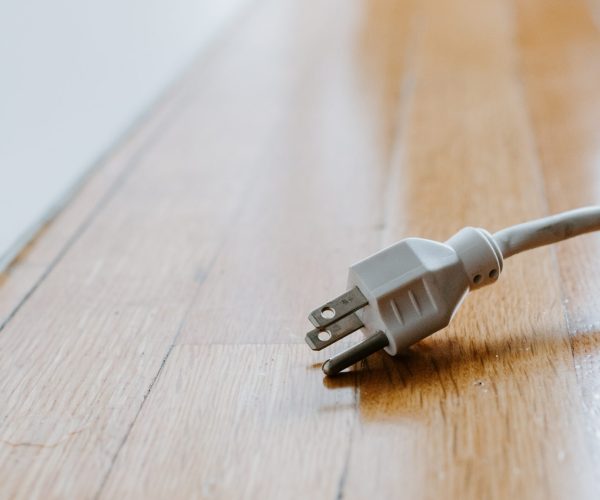UPS Maintenance 101: Extending the Life of Your Power Backup System
Uninterrupted power supply (UPS) systems are essential for modern enterprises due to the rapid development of technology and the persistent difficulty of loadshedding in South Africa. The capacity to preserve important activities during power outages or fluctuations is vital for assuring flawless operations, preventing data loss, and preserving productivity. One can hardly imagine a business in South Africa today without a power backup supply system.
A well-maintained piece of machinery will serve its owner well for many years. Your UPS is no exception and will require regular care for optimal performance. There is one more crucial aspect to think of. Proper installation ensures a solid foundation for the effective maintenance of your UPS.
It is important to install the modem UPS system in a place that is dry, well-ventilated, and cool. The user manual should be consulted for information on the ideal operating temperature. For sites without air conditioning, it is recommended to employ an exhaust fan to maintain the surrounding temperature as specified by the UPS system manufacturer. The modem UPS system should also be kept out of the way of any sources of heat, such as windows or other sources of direct sunlight.
You may get the latest updates sent straight to your phone with the EskomSePush app. Keep up with Eskom, City Power in Johannesburg, and the City of Cape Town by following their respective social media accounts. To find out more about the best printers for sale in South Africa, or our affordable copier rentals, get in touch with a consultant today. We also offer SME financing options too.
Dust, dampness, caustic chemicals, water spills, and potential rodent entrances should be avoided around the installed UPS system. When installing a UPS, make sure to leave at least two feet of clearance from the wall and remove anything that could block the air vents. Keep combustibles and clutter away from the UPS battery.
Only trained electricians, dressed appropriately for electrical safety, should enter the space housing the UPS system on a regular basis to perform checks, such as taking readings of the input and frequency voltages, the output and load currents, and the battery voltage.
It’s important to only connect the recommended types of loads to the UPS system and stay within its capacity to avoid overloading. Choose the proper motherboards for the input and output circuits. UPS installations in mountainous terrain may benefit from the addition of lightning arrestors.
Dust, dampness, caustic chemicals, water spills, and potential rodent entrances should be avoided around the installed UPS system. When installing a UPS, make sure to leave at least two feet of clearance from the wall and remove anything that could block the air vents. Keep combustibles and clutter away from the UPS battery.

Only trained electricians, dressed appropriately for electrical safety, should enter the space housing the UPS system on a regular basis to perform checks, such as taking readings of the input and frequency voltages, the output and load currents, and the battery voltage.
It’s important to only connect the recommended types of loads to the UPS system and stay within its capacity to avoid overloading. Choose the proper motherboards for the input and output circuits. UPS installations in mountainous terrain may benefit from the addition of lightning arrestors.
Avoid voltage dips by keeping the UPS close to the batteries and by using high-quality cables with appropriate ratings for input and output terminations. Before settling on a UPS, it’s important to consider the capabilities of existing energy metres.
Use the correct earthing techniques to make sure the UPS is properly connected. Consider the load, UPS capacity, the likelihood of power fluctuations, outages, and the required backup time when deciding how many batteries to purchase. Seek advice from your supplier.
The longevity of batteries can be greatly increased by charging them immediately after use. If a battery is showing signs of weakness, you should replace it right away so that it doesn’t affect the overall performance. Here’s what you need to know about UPS maintenance. This article looks at ways that you can keep your UPS running for as long as possible.

Periodic Checks
When performing periodic maintenance on your machinery, it’s a good idea to give everything a good once-over to check for things like loose connections, burned insulation, and other signs of wear.
To make sure your UPS is safe from any compromising substances, take time to visually inspect it for liquid contamination from sources such as batteries and capacitors.
Ensure the regularly cleaning and vacuuming of the enclosures, removing any dust or debris that may be preventing the equipment from functioning properly. It is also wise to inspect the heating, ventilation, and air conditioning system, specifically how well it regulates temperature and humidity.
Ensure that the UPS’s transfer switches, circuit breakers, and maintenance bypasses are all in working order.
A monthly or quarterly evaluation of the UPS is recommended if a generator is part of the building’s emergency-power system and feeds the UPS. The frequency with which generators are tested is often specified in a facility’s generator maintenance schedule.
A UPS is built to handle the load for a limited duration. Backup power generation is necessary to keep essential services running during extended power outages. Managers must take into account the particular characteristics of each location when developing maintenance plans.
Annual Checks
Start by giving your UPS a good cleaning, paying specific attention to the fans, before performing any further maintenance. Ensure that the UPS’s transfer switches, circuit breakers, and maintenance bypasses are all in working order.
Perform a thorough inspection of the system’s mechanical health, checking each part for signs of damage or wear. Battery performance can be ensured by checking the integrity of the electrical and physical connections between individual cells.
Perform a thorough functional test, looking at the rectifiers, inverters, static switches, and manual bypass, as well as the UPS as a whole. Verify the UPS’s output and evaluate the load distribution between phases to ensure smooth operation.
Verify the proper operation of all monitoring and indicating equipment by conducting a functional check. Test the UPS in real-world situations by simulating a power outage. By following this detailed maintenance schedule, you can rest assured that your UPS will continue to serve you well in all of its operational guises.
We recommend you check out how to protect your electronics during loadshedding, if you liked this article. Contact us for more information.
